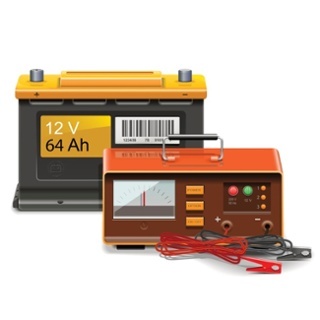 Lithium-ion battery research in June and early July show that manufacturers can drastically improve lithium batteries by optimizing current materials, rather than developing new components. Research teams at the Paul Scherrer Institute PSI and Texas A&M University published papers discussing two different methods of capitalizing on lithium ion battery construction methods. In laboratory settings, the Paul Scherrer Institute PSI team’s findings enhanced lithium-ion battery storage capacity while reducing charge time, and the Texas A&M researchers discovered how to improve a battery’s energy efficiency.
Lithium-ion battery research in June and early July show that manufacturers can drastically improve lithium batteries by optimizing current materials, rather than developing new components. Research teams at the Paul Scherrer Institute PSI and Texas A&M University published papers discussing two different methods of capitalizing on lithium ion battery construction methods. In laboratory settings, the Paul Scherrer Institute PSI team’s findings enhanced lithium-ion battery storage capacity while reducing charge time, and the Texas A&M researchers discovered how to improve a battery’s energy efficiency.
Discovering new ways to optimize conventional lithium-ion batteries lessens the time and resource requirements to overhaul current technology, which can free researchers and manufacturers to focus on implementing a better product, rather than developing a new battery design.
However, the lithium battery field has become so competitive that most researchers concentrate on developing new materials or designs, Claire Villevieille, head of the battery materials research group at the Paul Scherrer Institute PSI, said in a press release. This laser-like focus means that many of these researchers are missing materials optimization opportunities that are right in front of them.
Villevieille, her co-researcher Juliette Billaud and their colleagues at the ETH in Zurich strayed from the norm and investigated how to fully exploit and optimize a lithium-ion battery’s graphite anode. Graphite nodes operate as negative electrodes in the battery, and by optimizing the anode the researchers were able to boost battery performance by a factor of up to three.
Because these laboratory-tested batteries have complex construction requirements, commercial batteries won’t be able to fully replicate Villevieille’s results. Yet she said in the release that performance will definitely be enhanced, perhaps by as much as 30 to 50 percent, and more experiments should yield more accurate predictions.
She also said that conventional lithium-ion battery manufacturers can already include this anode discovery in their construction processes.
"We already have everything we need,” Villevieille said in the release. “If a manufacturer were willing to take on production, enhanced batteries could be ready for the market within one or two years."
This anode enhancement is done by rearranging the graphite bar that stores lithium ions during a charge cycle. By arranging the densely packed graphite flakes vertically during the anode production process, they get placed next to each other and orient the electrode more directly to the cathode, which increases battery storage capacity and decreases the charge time.
Implementing this procedure during the battery manufacturing process is simple, cost-effective and scalable for every type of application that uses rechargeable lithium power sources, from marine batteries to smartphones and even electric car batteries.
This lithium ion redirection method correlates well with the findings from an international team of researchers lead by Chemist Sarbajit Banerjee at Texas A&M University.
The research has the potential to create more efficient lithium-ion batteries by showing why the ion traffic jam happens around the graphite bar. The ionic slog slows down the battery’s charging and discharging processes, but if researchers can figure out a way to bypass this then they can drastically improve the battery’s ability to hold a charge and then efficiently discharge it.
"Fundamentally, when you have a battery, every time you use it, it starts to die a little bit," Banerjee said in the release. "The more you use it, the more it dies. Eventually, it becomes unusable. Theoretically speaking, you expect a certain performance from a battery, and you rarely ever get there. People have been at a loss to understand all the factors that contribute to this lack of full capacity. This study points us in that direction."
Banerjee and his team used one of the world's most powerful soft X-ray microscopes to image a traffic jam of lithium ions that were chemically driven through a series of nanowire-based channels in a simulated battery.
"For a battery to function properly, you need to get lithium ions in, and you need to be able to pull them out," Banerjee said. "Once our lithium ions got in, we were seeing that they sort of stop at some point along the way."
The research shows that when the electrons are coupled with the lithium ions they stall in one place instead of moving freely. When these ions glob together in a roadblock, they eventually slow the battery down and distort the battery’s electronic structure, which essentially limits the potential flow of energy to a device.
Understanding this energy flow allows researchers to optimize the graphite flake layout in lithium-ion batteries and increase ionic flow, capacity and efficiency — much like the Paul Scherrer Institute PSI team’s discovery about graphite arrangement. Combined, these two research projects mean conventional lithium-ion batteries still have a lot of untapped potential.
However, this potential is still in the future — at least one to two years away. In the meantime, global energy demands continually increase. Get in touch with us to learn more about how RELiON’s lithium-ion technology can empower your energy needs now, and in the future.
(Information for this report was provided by the Paul Scherrer Institute PSI and Texas A&M University.)